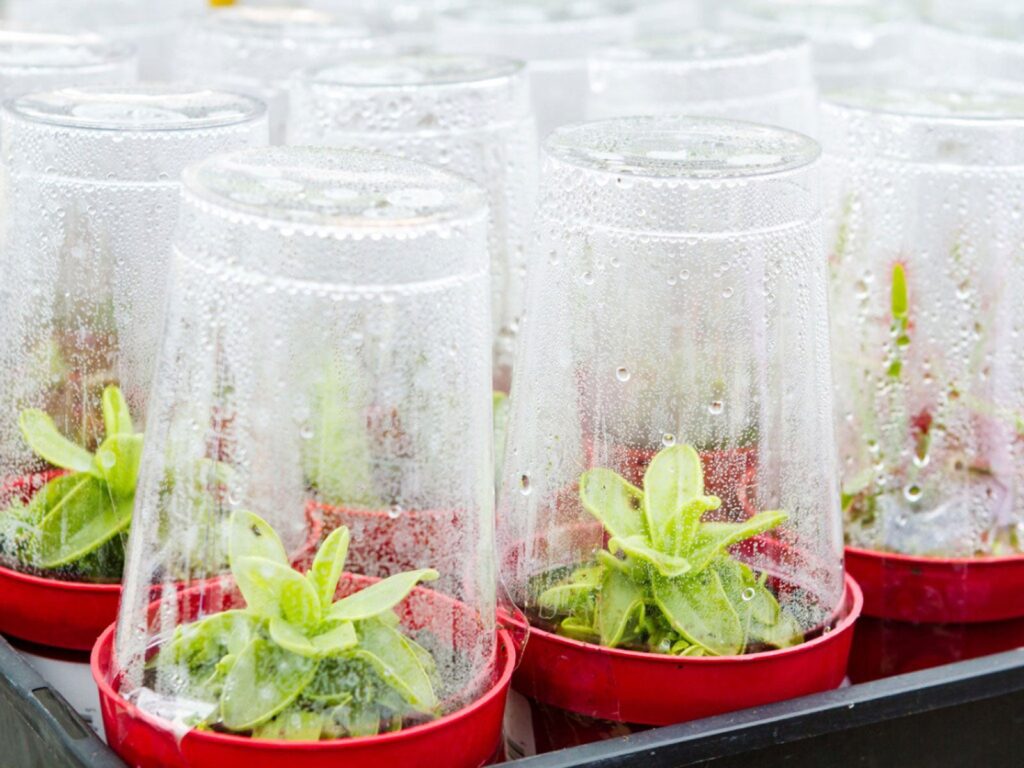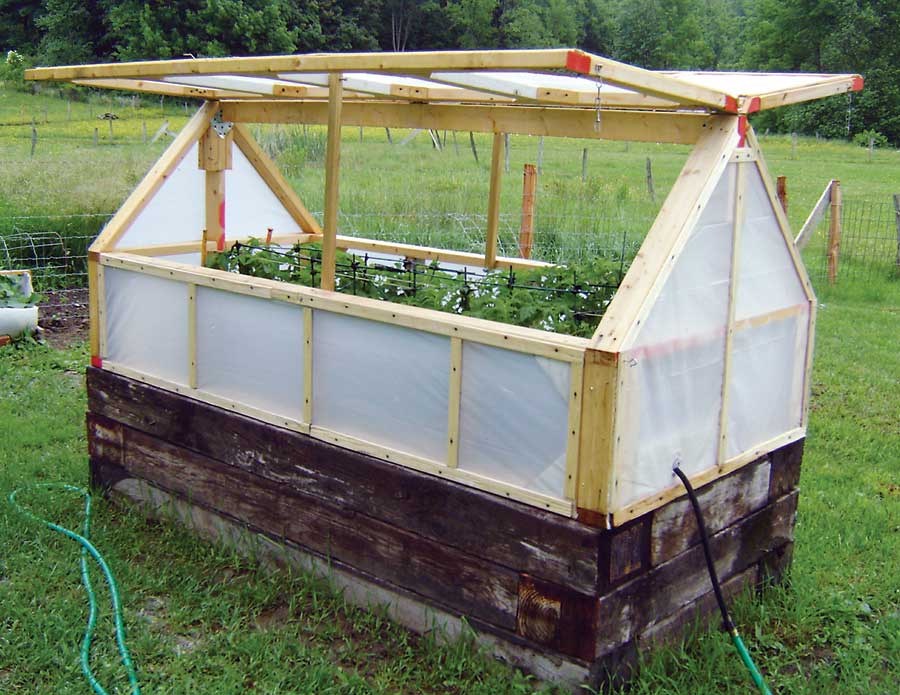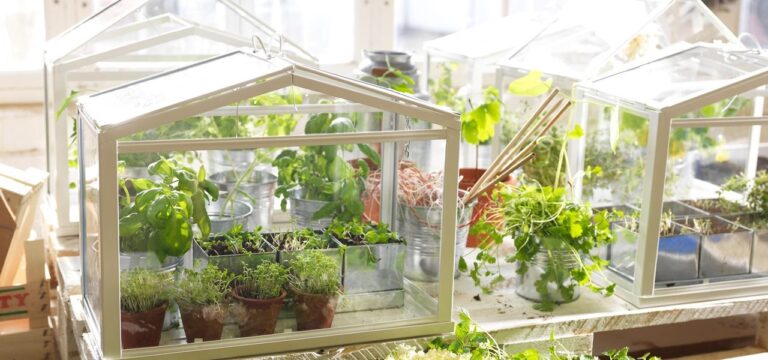A mini greenhouse for herbs is a small, portable space that creates an ideal environment for herb growth. These compact structures provide protection from harsh weather, pests, and offer controlled temperature and humidity. They’re perfect for cultivating herbs like basil, mint, and parsley, ensuring a longer growing season.
Mini greenhouses are typically easy to set up, requiring minimal space, making them ideal for balconies or small gardens. They also allow you to start your herb garden earlier in the spring. With proper care and attention, your mini greenhouse herbs can thrive, providing a fresh and convenient supply of flavorful herbs for your culinary adventures.
What are the Factors to consider when choosing a mini greenhouse for herbs?
When selecting a mini greenhouse for herbs, consider the following factors
Size: Evaluate the available space and the number of herbs you want to grow. Ensure the greenhouse size accommodates both the quantity and diversity of herbs you plan to cultivate.
Materials: Assess the construction materials of the greenhouse. Choose durable and UV-resistant materials such as polycarbonate or polyethylene to withstand various weather conditions.
Ventilation Options: Examine ventilation features to maintain proper airflow. Adjustable vents or windows help regulate temperature and humidity, preventing issues like mold growth and ensuring a well-regulated microclimate for herbs.
Which Herbs Are Best for Mini Greenhouses?

Identifying the best herbs for mini-greenhouses involves considering their adaptability to confined spaces, responsiveness to controlled climates, and versatility in culinary and medicinal applications.
Basil (Ocimum basilicum)
Basil thrives in the controlled environment of a mini greenhouse, benefiting from stable temperatures and ample sunlight.
It is known for its aromatic leaves, basil is a staple in various cuisines, adding flavor to dishes like pasta, salads, and sauces.
Rosemary (Rosmarinus officinalis)
Rosemary is well-suited for mini-greenhouses, particularly in regions with colder climates.
It is widely used in Mediterranean cuisine, rosemary enhances the flavor of roasted meats, vegetables, and bread.
Thyme (Thymus vulgaris)
Thyme adapts well to the controlled conditions of a mini greenhouse, thriving with consistent warmth and sunlight.
Its versatile flavor makes thyme a valuable addition to soups, stews, and various meat and vegetable dishes.
Mint (Mentha spp.)
Mint is highly adaptable and can flourish in the confined space of a mini greenhouse.
With its refreshing taste, mint is perfect for teas, desserts, and cocktails.
Lavender (Lavandula spp.)
Lavender adapts well to the controlled environment of a mini greenhouse,
especially in cooler climates.
Aside from its aromatic qualities, lavender is used in both culinary applications, such as desserts, and for its soothing medicinal properties in teas and essential oils.
Chives (Allium schoenoprasum)
Chives thrive in the confined space of a mini greenhouse, enjoying consistent conditions.
With a mild onion flavor, chives are excellent for garnishing salads, soups, and various dishes.
What are the key steps in setting up a mini greenhouse for optimal herb cultivation?
Setting up a mini greenhouse for herb cultivation requires careful planning and attention to detail. Here’s a comprehensive guide to assembling and preparing your mini greenhouse, along with essential tips on placement, lighting, and temperature control.
Step-by-Step Guide on Assembling
- Unpack Components: Begin by unpacking all components of your mini greenhouse and ensuring that all parts are present.
- Read Instructions: Thoroughly read the manufacturer’s instructions for assembly. Each greenhouse model may have specific requirements.
- Frame Assembly: Start with assembling the frame, connecting poles, and ensuring stability. Follow the recommended sequence to avoid any issues.
- Cover Installation: Once the frame is secure, carefully install the greenhouse cover. Ensure it is tightly fitted and secured to provide proper insulation.
- Add Accessories: If your mini greenhouse includes shelves, racks, or other accessories, install them according to the provided instructions.
Tips on Placement
- Sunlight Exposure: Place the mini greenhouse in an area that receives ample sunlight. South-facing locations are generally ideal for maximum sunlight exposure.
- Protection from Winds: Position the greenhouse in a location protected from strong winds. This minimizes the risk of damage and helps maintain a stable internal environment.
- Accessibility: Ensure easy access for daily monitoring and care. Avoid placing the greenhouse in areas difficult to reach or where obstacles hinder routine tasks.
Tips on Lighting
- Natural Sunlight: Capitalize on natural sunlight as the primary light source for your herbs. Position the greenhouse to maximize exposure to sunlight throughout the day.
- Supplementary Lighting: If natural light is limited, consider supplementary lighting options, such as LED or fluorescent grow lights. Ensure proper placement to reach all areas of the greenhouse.
Tips on Temperature Control
- Ventilation: Sufficient ventilation is crucial. Use adjustable vents or windows to regulate temperature and humidity levels.
- Shading: In hot climates, consider adding shading to prevent overheating. Shade cloth or adjustable covers can help control temperature extremes.
- Heating Options: In colder climates, explore heating options like greenhouse heaters or heat mats to maintain a suitable temperature for herb growth.
When and how should I harvest herbs from my mini greenhouse?

Harvesting herbs from your mini greenhouse at the right time and using proper techniques is essential for preserving their maximum freshness and flavor. Here are guidelines for when and how to harvest herbs
Timing
Harvest herbs early in the morning when essential oils are at their peak concentration, ensuring maximum flavor. Harvest before herbs start flowering, as this is when they contain the highest concentration of essential oils.
Harvesting Techniques
Use sharp, clean scissors or pruning shears for a clean cut, minimizing damage to the plant. Harvest outer leaves first, allowing the inner leaves to continue growing. Choose young, tender leaves for the best flavor.
Frequency
Harvest herbs frequently, especially during the growing season, to encourage bushier growth and prevent plants from becoming leggy. Avoid harvesting more than one-third of the plant at a time to ensure continued vitality.
Storage
For the freshest flavor, use herbs immediately after harvesting. If not using immediately, store herbs in the refrigerator. Place them in a damp paper towel inside a plastic bag to maintain moisture.
Drying and Preserving
To preserve herbs for later use, air-dry them in a well-ventilated area away from direct sunlight. Moreover, freeze herbs in ice cube trays with water or olive oil for convenient use in cooking.
Whole Plant Harvest
Harvest the entire plant just before it starts flowering for herbs like basil, cilantro, and parsley. Also, consider replanting new herbs after harvesting the whole plant for a continuous supply.
Avoid Stress Periods
Harvest before herbs enter the flowering stage to avoid stress, ensuring the highest concentration of essential oils.
FAQ
Can you grow herbs in a mini greenhouse?
Yes, herbs can thrive in a mini greenhouse. The controlled environment provides optimal conditions for herb cultivation, allowing you to enjoy fresh and flavorful herbs year-round.
What can I put in a mini greenhouse?
A mini greenhouse is versatile, accommodating various plants such as herbs, vegetables, flowers, and even smaller fruiting plants. The controlled environment offers a conducive space for nurturing a wide range of plant species.
Which herbs do best in a greenhouse?
Herbs that do exceptionally well in greenhouses include basil, rosemary, thyme, mint, and chives. These herbs benefit from the stable and controlled climate that a greenhouse provides.
What is a mini greenhouse?
A mini greenhouse is a compact structure designed for cultivating plants in a controlled environment. It typically features transparent walls to allow sunlight penetration, creating an optimal setting for plant growth.
How to make a mini greenhouse?
Creating a mini greenhouse involves constructing a small structure with transparent walls. You can use materials like PVC pipes or wooden frames covered with plastic sheeting. This DIY project requires careful planning to ensure proper ventilation and insulation.
What is the use of a mini greenhouse?
A mini greenhouse serves the purpose of extending the growing season, protecting plants from adverse weather, and providing an ideal environment for cultivation. It enables gardeners to grow plants in controlled conditions, fostering better growth and yields.
How effective are mini greenhouses?
Mini greenhouses are highly effective for home gardening. They provide a controlled environment that promotes optimal plant growth, protects against unfavorable weather conditions, and allows year-round cultivation, making them a valuable tool for gardeners.
What are mini greenhouses made of?
Mini greenhouses can be made of various materials, including PVC, wood, aluminum, or steel for the frame. The covering is typically made of transparent materials like polyethylene or polycarbonate, allowing sunlight to reach the plants while creating a greenhouse effect.
Final thoughts
On the whole, a mini greenhouse is a fantastic solution for growing herbs in a small space. It offers protection from the elements, extends the growing season, and creates an optimal environment for herbs to flourish. Whether you have a balcony or a tiny garden, a mini greenhouse can be a game-changer, allowing you to enjoy fresh and flavorful herbs throughout the year.
With easy setup and low maintenance, it’s a practical choice for both beginners and experienced gardeners. So, consider adding a mini greenhouse to your herb gardening arsenal and watch your little green haven thrive with aromatic and delicious herbs. Happy gardening!

